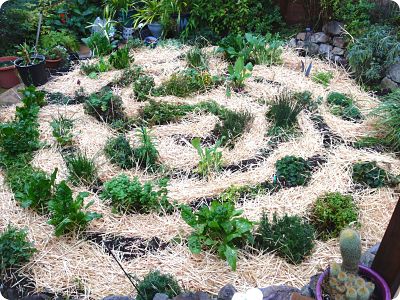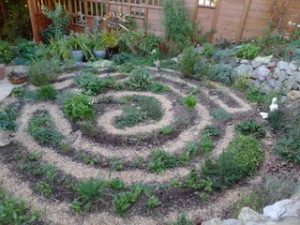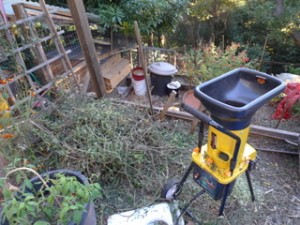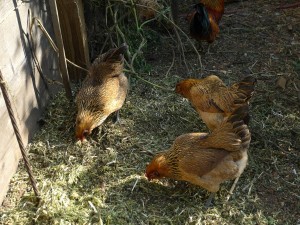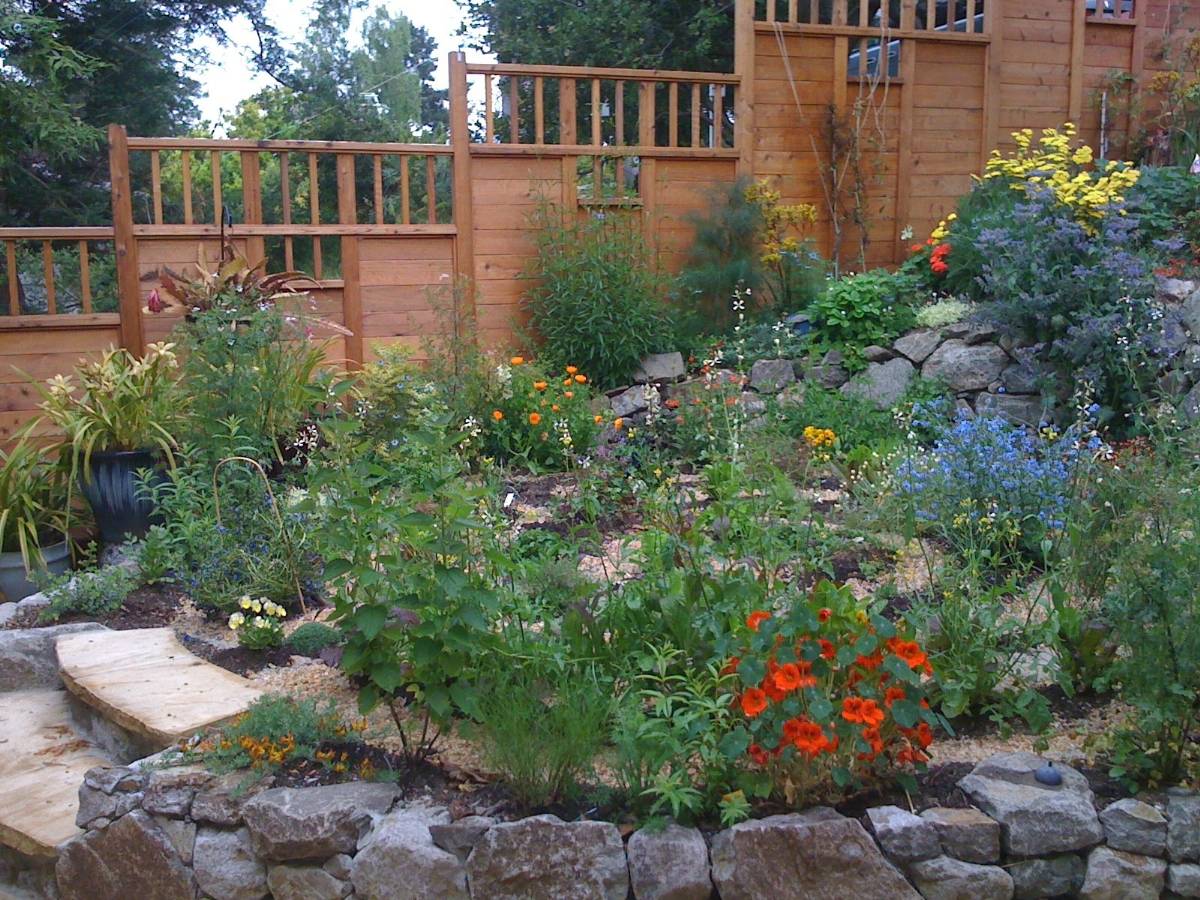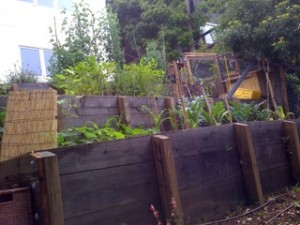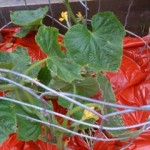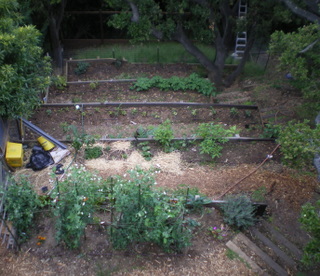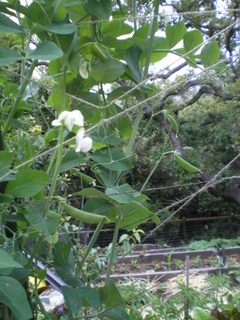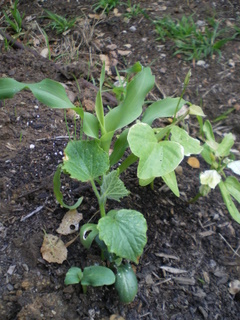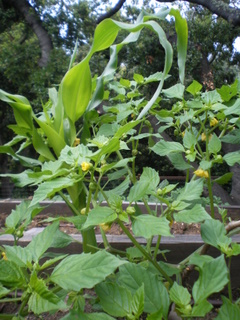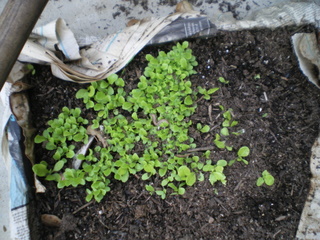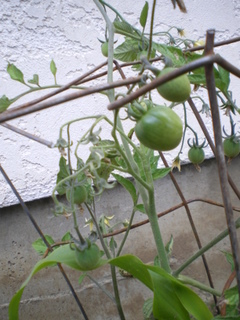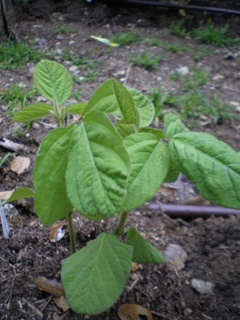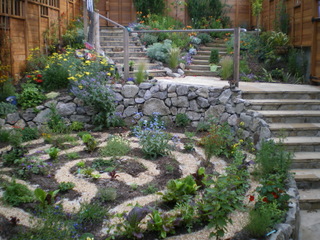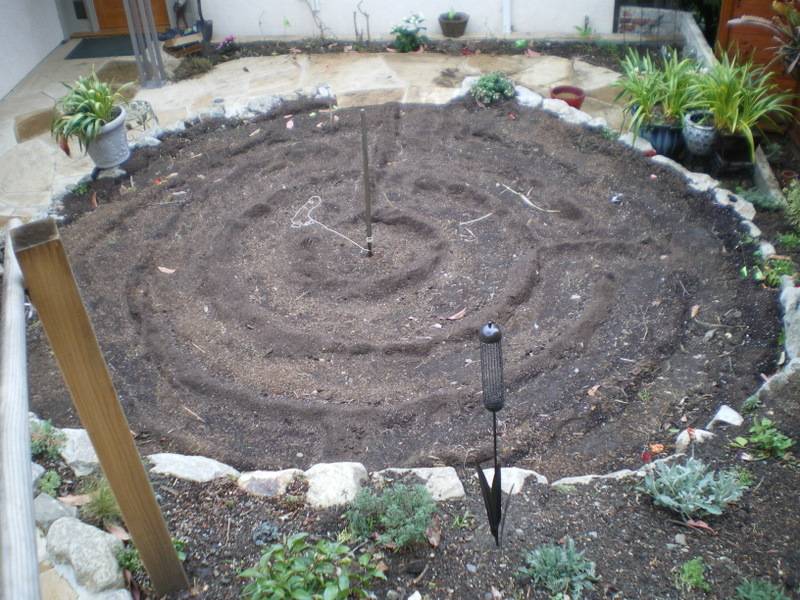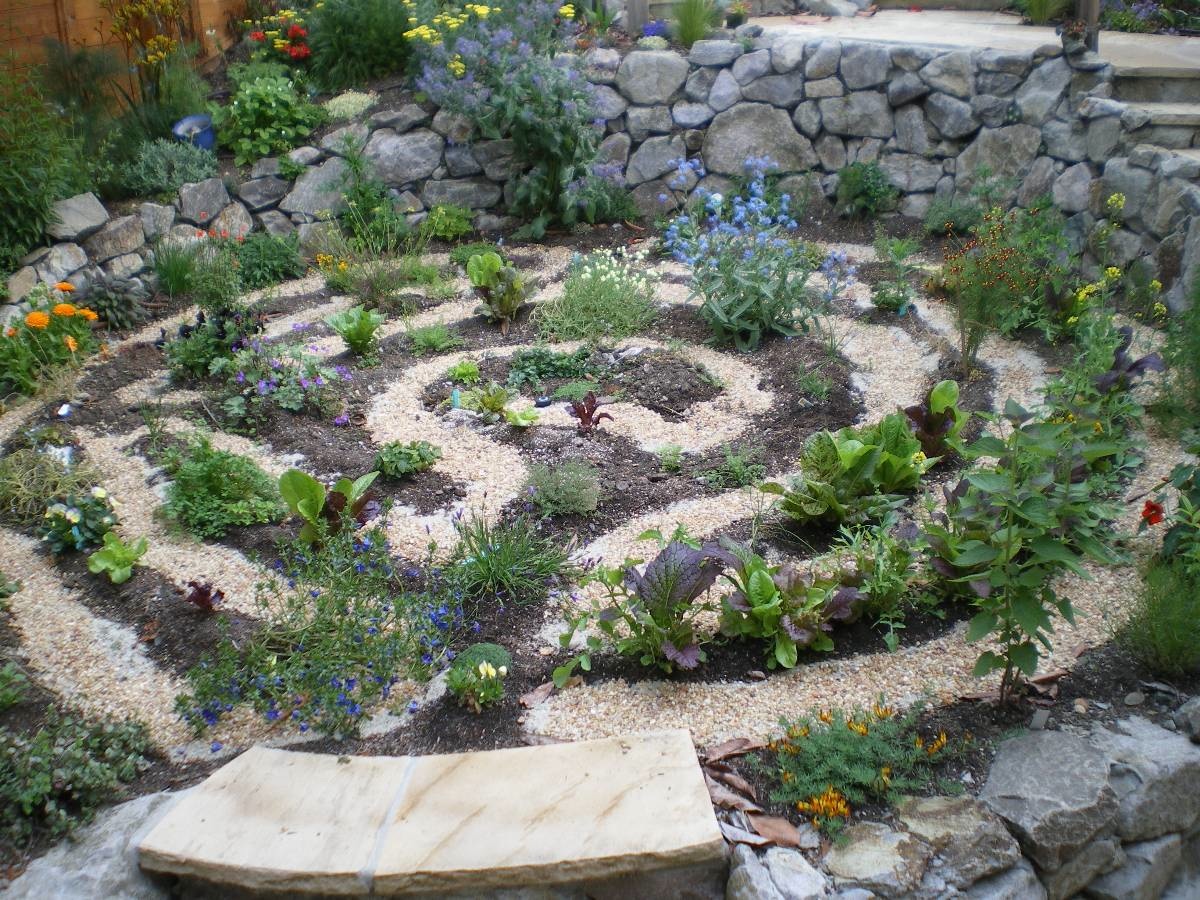 Yesterday was the day for pruning the labyrinth. I am a person who loves to plant and tend but hates to cut. My mother used to say she liked the look of wild gardens, and I guess I do, too.
Yesterday was the day for pruning the labyrinth. I am a person who loves to plant and tend but hates to cut. My mother used to say she liked the look of wild gardens, and I guess I do, too.
Nonetheless, it was no longer possible to walk the full labyrinth, so pruning and tying back was in order. I took my wonderful Japanese scissors and some brown garden twine, and set to work.
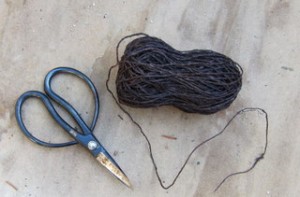
The whole project took four hours, not the hour or so I’d expected. But it at the end the labyrinth was a labyrinth again, not an impassable maze, and the pullets feasted on the cuttings.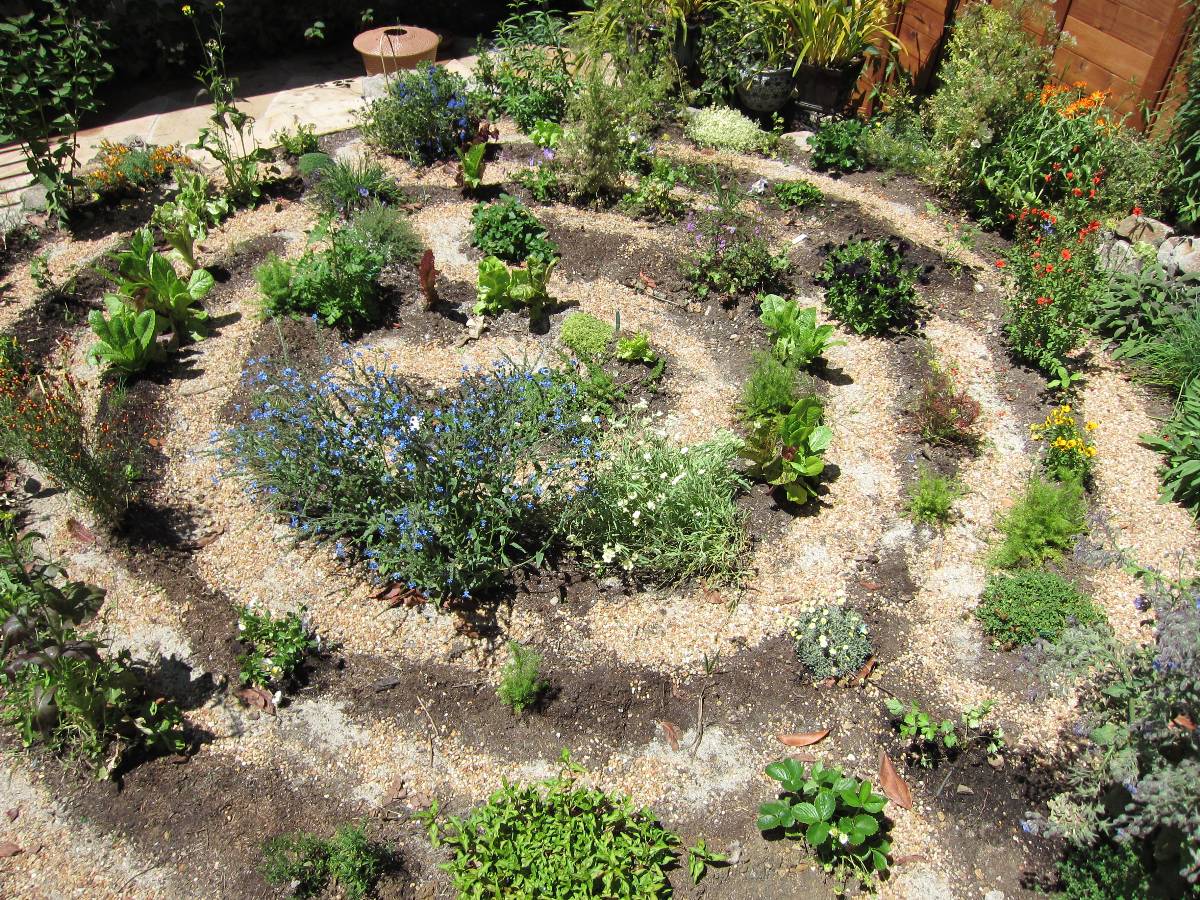
As a finishing touch, I placed a statue (a wonderful gift from a sculptor friend) near the center. In addition to gracing the labyrinth, it holds back the Blue Showers plant so that I didn’t have to completely decimate it.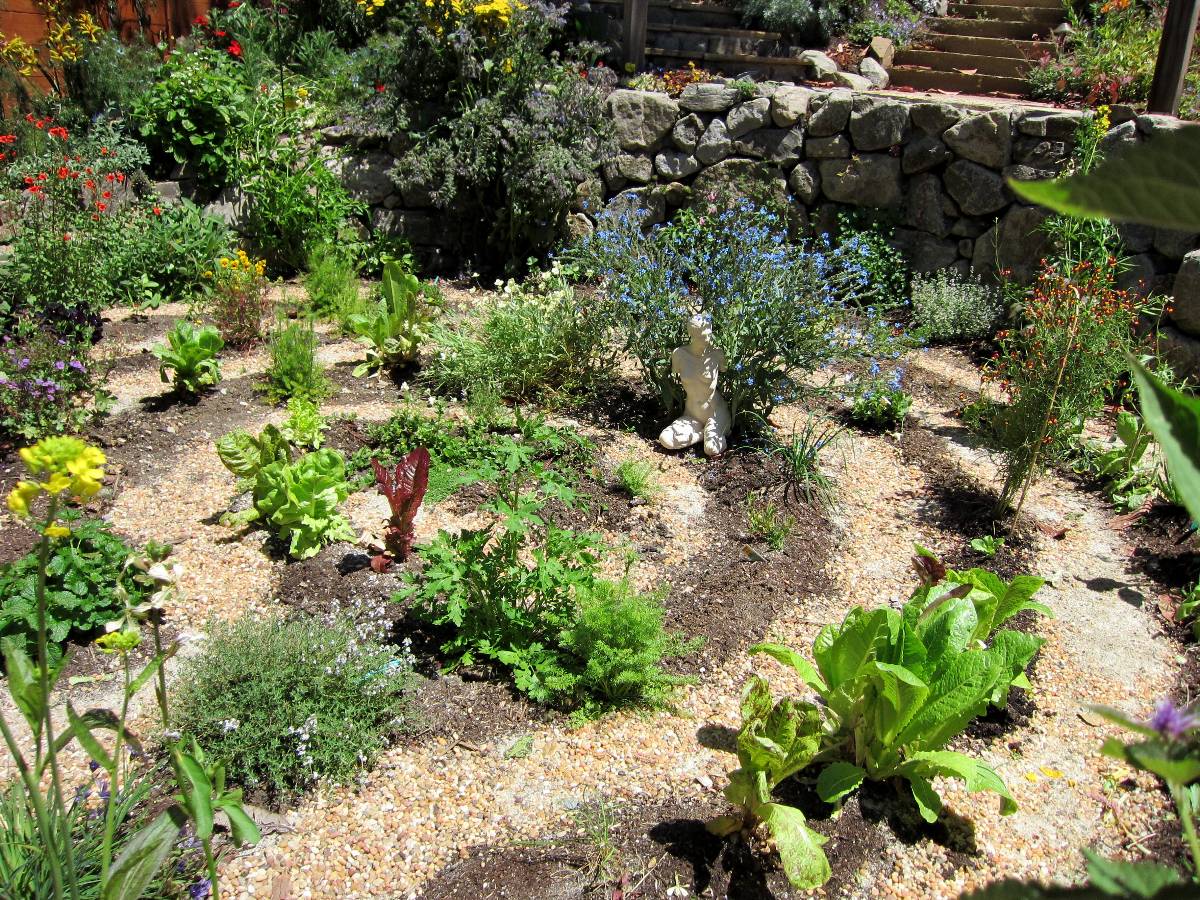
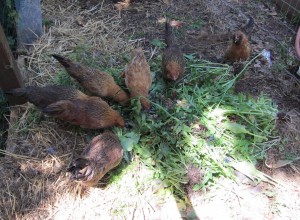 Everyone was happy. Or at least the chickens and I were both pleased with the morning’s work.
Everyone was happy. Or at least the chickens and I were both pleased with the morning’s work.
If I were to work on a poem today, it would be in the category Bob Hass called in a lecture “poems of domestic felicity.” One of my favorites in that category is this one, “Everyone Was in Love.”As with all domestic felicity, there is a hint of darkness at the edges that only makes the moment sweeter.
Everyone Was in Love
One day, when they were little, Maud and Fergus
appeared in the doorway, naked and mirthful,
with a dozen long garter snakes draped over
each of them like brand-new clothes.
Snake tails dangled down their backs,
and snake foreparts in various lengths
fell over their fronts, heads raised
and swaying, alert as cobras. They writhed their dry skins
upon each other, as snakes like doing
in lovemaking, with the added novelty
of caressing soft, smooth, moist human skin.
Maud and Fergus were deliciously pleased with themselves.
The snakes seemed to be tickled too.
We were enchanted. Everyone was in love.
Then Maud drew down off Fergus’s shoulder,
as off a tie rack, a peculiarly
lumpy snake and told me to look inside.
Inside that double-hinged jaw, a frog’s green
webbed hind feet were being drawn,
like a diver’s, very slowly as if into deepest waters.
Perhaps thinking I might be considering rescue,
Maud said, “Don’t. Frog is already elsewhere.”
This poem is in Galway Kinnell’s latest book, Strong is Your Hold. Not only is this a wonderful book, it comes with a CD of Galway reading the poems. He has one of the great reading voices, and the book is worth it just to hear him read this poem.
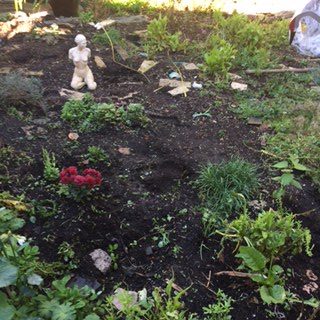 No, it’s not because of political chaos, it’s just that the labyrinth has become too labor intensive. I decided to have a little pond and rock garden instead. The first step is digging up plants I want to save–easy to do after the rain–and pot them for the short term, to replant after the stonework and pond are done.
No, it’s not because of political chaos, it’s just that the labyrinth has become too labor intensive. I decided to have a little pond and rock garden instead. The first step is digging up plants I want to save–easy to do after the rain–and pot them for the short term, to replant after the stonework and pond are done.
